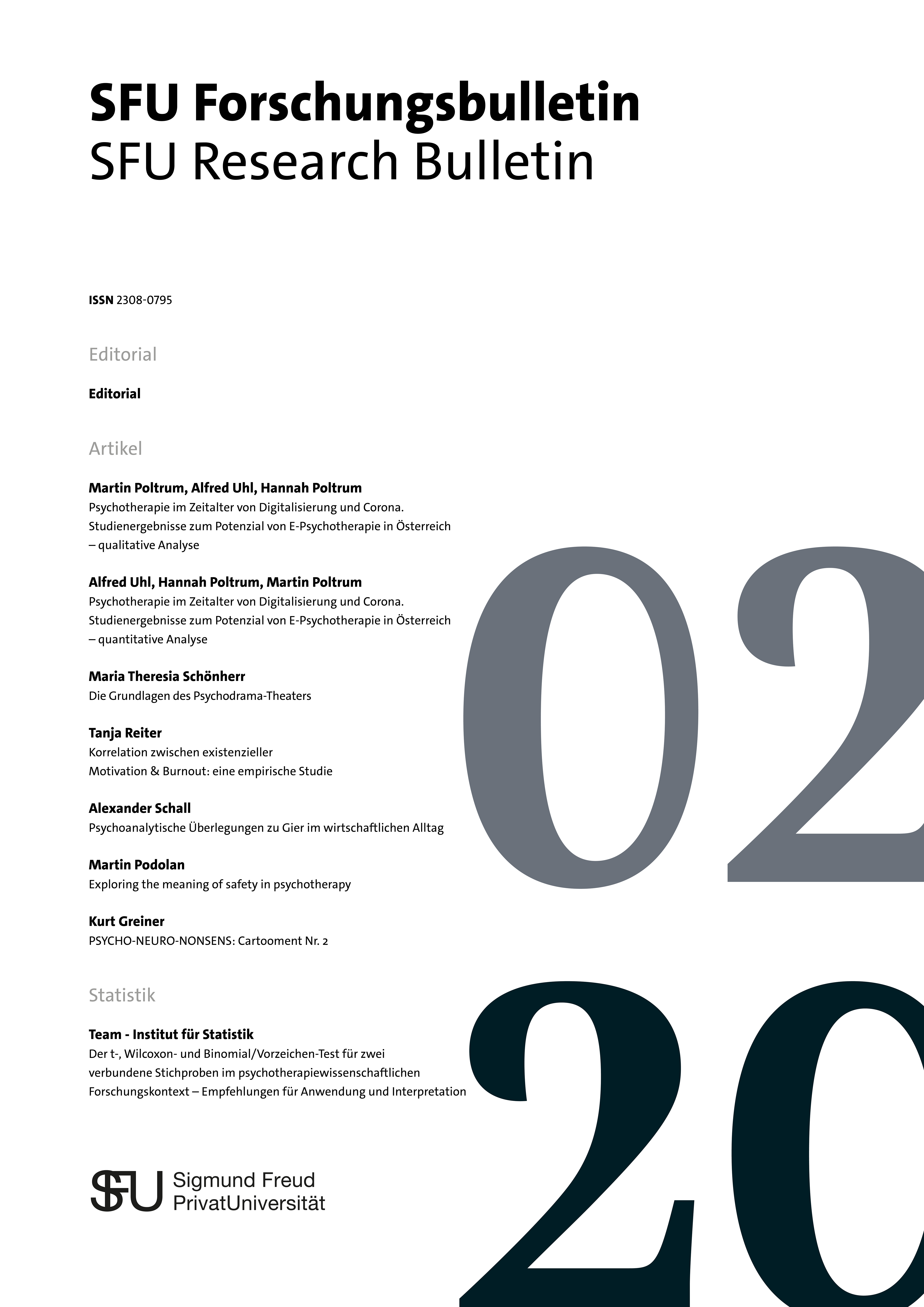Psychoanalytische Überlegungen zur Gier im wirtschaftlichen Alltag
DOI:
https://doi.org/10.15135/2020.8.2.92-105Abstract
Gier ist ein unersättliches Verlangen, das über die Bedürfnisse des Subjekts hinaus geht. Die Gier ist ein Schutz gegen die Angst zu zu sterben. Trotz des Versuchs ein libidinös besetztes Objekt zu verschlingen geht es verloren. Die Gier ist keine Abwehrstrategie, sondern ein Symptom, das in gefährlichen Situation hilft und so lebensnotwendig erscheint. Die Gier stellt eine Form von pervertierter Liebe dar. Offensichtlich wurde das durch die Finanzkrise. Das Ziel war losgelöst von einem Zweck, es ging nur noch um Gewinnmaximierung. Wenn man über Gier nachdenkt, meint man daher meist die Auswüchse davon. Im Beruf verschlingen so narzisstische Manager ganze Teams, haben damit kurzfristig zwar Erfolg, doch oft mit der Folge, dass Organisationen nach exzessivem Missbrauch ins Wanken geraten. Im Alltag finden sich Beispiele, die zeigen, dass Menschen aufgrund von Gier irrationale Entscheidungen treffen und auf ihre verführerische Wirkung reinfallen. Unerklärliche Betrugsfälle erscheinen in diesem Kontext auch besser verständlich. Dieser Mechanismus wird aber auch von Unternehmen eingesetzt, um Kunden zu binden und um Mitarbeiter zu Höchstleistungen zu motivieren. Die Gegenposition zur Gier ist Zufriedenheit mit dem was da ist, also unangenehme Situationen anzunehmen und damit umzugehen lernen.
Literaturhinweise
Altmeyer, M. (2016). Auf der Suche nach Resonanz. Göttingen: V&R.
Barks, C. (2015). Walt Disney´s Donald Duck. „The pixilated Parrot”. Seattle: Fantagraphics Books.
Camus, A. (1984). Der Mythos von Sisyphos. Ein Versuch über das Absurde. Hamburg: rororo.
Ellenberger, H. F. (2005). Die Entdeckung des Unbewußten. Geschichte und Entwicklung der dynamischen Psychiatrie von den Anfängen bis zu Janet, Freud, Adler und Jung. Zürich: Diogenes.
Freud, S. (1975). Jenseits des Lustprinzips. Studienausgabe. Zürich: Buchclub Ex Libris.
Fromm, E. (2017). Haben oder Sein, die seelischen Grundlagen einer neuen Gesellschaft. München: dtv.
Heenen-Wolff, S. (2010). Psychoanalyse und Freiheit. Frankfurt am Main: Peter Lang.
Kets de Vries, M. (2009). Führer, Narren und Hochstapler. Die Psychologie der Führung, Stuttgart: Schäffer-Poeschel.
Klein, M. (2000). Gesammelte Schriften, Band III, Schriften 1946 – 1963, Stuttgart: frommann-holzboog.
Klug, H. (2018). Die Finanzkrise 2008 im Unbewussten, über die Ökonomie des Seelenlebens in Zeiten der Krise. Wiesbaden: Springer.
McDougall, J. (1988). Theater der Seele, Illusion und Wahrheit auf der Bühne der Psychoanalyse. München: Verlag Internationale Psychoanalyse.
Mentzos, S. (2017). Lehrbuch der Psychodynamik. Göttingen: Vandenhoeck & Ruprecht.
Mertens W. (2014). Handbuch psychoanalytischer Begriffe, Stuttgart: Kohlhammer.
Ortmann, G. (2015). Organisation und Moral, die dunkle Seite. Weilerswist: Velbrück Wissenschaft.
Riemann, F. (2017). Grundformen der Angst, München: Reinhardt.
Winnicott, D. W. (2019). Der Anfang ist unsere Heimat. Gießen: Psychosozial-Verlag.
Winnicott, D. W. (2020). Reifungsprozesse und fördernde Umwelt. Gießen: Psychosozial-Verlag.
Wirth, H. (2015). Narzissmus und Macht. Gießen: Psychosozial-Verlag.
